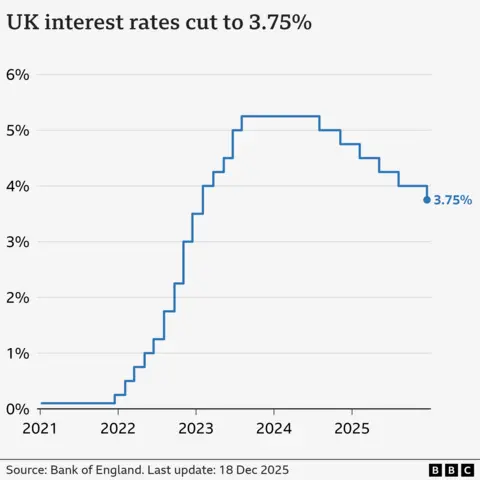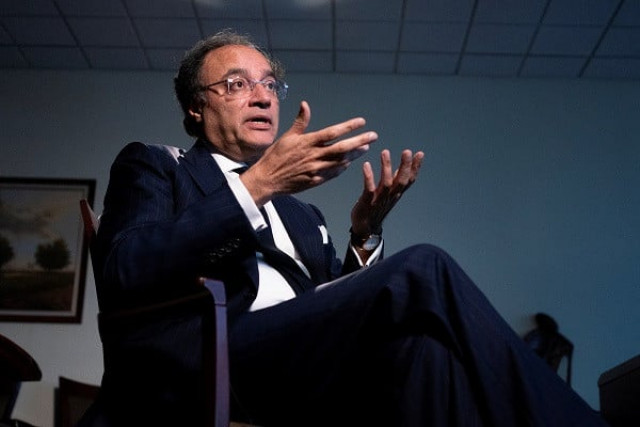Business
Where the blockbuster weight loss drug market stands today — and what’s coming next

A combination image shows an injection pen of Zepbound, Eli Lilly’s weight loss drug, and boxes of Wegovy, made by Novo Nordisk.
Hollie Adams | Reuters
The appetite for blockbuster weight loss and diabetes drugs is far from satisfied.
From fresh competition to new uses, the market is quickly vaulting into a new stage of growth. But factors including insurance coverage, pricing, copycat drugs and the development of new pills will ultimately determine how far the treatments will reach.
Eli Lilly and Novo Nordisk are still the dominant players, as demand for their weekly injections shows few signs of slowing. Eli Lilly has pulled ahead in the market, saying during its third-quarter earnings call on Thursday that it gained share for the fifth consecutive quarter and that its drugs account for nearly 6 out of 10 prescriptions within the injectable obesity and diabetes class.
But both firms are focused on ramping up supply, testing new uses for their medicines and bringing the next wave of obesity drugs to patients, including more convenient pills.
Behind them is a slate of drugmakers – from biotech upstarts to pharma giants – racing to win a slice of what some analysts expect could be a roughly $100 billion market by the end of the decade. There may be plenty of room for new entrants: McKinsey projects that 25 million to 50 million U.S. patients could use GLP-1s by 2030.
Nearly every major pharmaceutical company has bet on obesity drugs, often through deals with smaller developers, including businesses based in China. While some experimental drugs are further along than others, all are likely years away from hitting the market, and their competitive potential will depend on future data showing their effectiveness and how well patients tolerate them.
As competition heats up, many patients are still struggling to access the drugs. Some insurers, including Medicare, don’t cover GLP-1s for obesity, which can cost roughly $1,000 per month before rebates.
Eli Lilly and Novo Nordisk have rolled out discount programs for cash-paying patients to close the gap, and more employers are offering coverage as GLP-1s prove their added health benefits like treating obstructive sleep apnea and chronic kidney disease as well as slashing cardiovascular risks.
Still, some patients continue to use cheaper, copycat versions of branded treatments – even though those alternatives are restricted in many cases. While Novo Nordisk and Eli Lilly’s drugs are no longer in shortage, both companies are cracking down on pharmacies, medspas and other suppliers that mass-produce and market cheaper compounded GLP-1s.
While new competitors and lower-cost pills could allow drugs to reach more patients, access will largely depend on how companies like Novo Nordisk and Eli Lilly choose to price their drugs in the years ahead.
Here’s what to know about the state of the booming weight loss drug market.
Novo Nordisk scrambles to catch up to Lilly
David Ricks, chief executive officer of Eli Lilly & Co., during a news conference at Generation Park in Houston, Texas, US, on Tuesday, Sept. 23, 2025.
Mark Felix | Bloomberg | Getty Images
Eli Lilly has taken the lead in the injectable GLP-1 market. Once the frontrunner, Novo Nordisk lost ground, particularly in the U.S., after supply chain issues, Eli Lilly’s emergence and the spread of compounded options.
Eli Lilly eclipsed its Danish rival for the first time in May, when it secured 53% of the market during the first quarter. In August, Eli Lilly said its share rose to 57% during the second quarter.
TD Cowen analyst Michael Nedelcovych said that’s largely because Eli Lilly’s injections are superior to Novo Nordisk’s drugs in terms of safety and efficacy. Eli Lilly’s diabetes drug Mounjaro is viewed as a better treatment than Novo Nordisk’s Ozempic, he noted. Real-world data and a head-to-head clinical trial have shown that Eli Lilly’s obesity injection Zepbound leads to more weight loss than Novo Nordisk’s Wegovy.
“It’s better efficacy, and at least anecdotally in real-world practices, it’s better tolerability,” Nedelcovych said. “In our business, that’s usually all that’s required for share gains, and I think we’re seeing that play out very quickly.”
Investors have unloaded Novo Nordisk’s stock, which has fallen almost 40% this year. Novo Nordisk cut its profit and sales forecast in July, saying compounded drugs had cut into Wegovy’s market. The company had already lowered its 2025 outlook in May.
As competition mounts, data on Novo Nordisk’s experimental medicines also underwhelmed Wall Street and raised concerns about the growth of its drug portfolio beyond Wegovy and Ozempic.
In a note in September, BMO Capital Markets analyst Evan Seigerman said the company raised expectations too high for its next-generation obesity drug CagriSema, was slow to launch direct-to-consumer sales of its popular drugs and had a “tepid initial response” to compounders selling copycat treatments.
What’s more, Medicare is negotiating the price of Novo Nordisk’s semaglutide – the active ingredient in Ozempic, Wegovy and the company’s diabetes pill Rybelsus – effective in 2027, which could further cut into revenue. Eli Lilly’s tirzepatide, the active ingredient in Mounjaro and Zepbound, likely won’t be subject to price discussions until the end of the decade.
Novo Nordisk is betting its new CEO, Mike Doustdar, will help it regain its footing. He took the helm in late July after the board ousted former top executive Lars Fruergaard Jorgensen.
Doustdar isn’t wasting any time to make changes: Novo Nordisk in September announced plans to cut around 9,000 roles, or roughly 11.5% of its global workforce.
There is still turbulence at the pharmaceutical giant. On Tuesday, Novo Nordisk said several board members will step down after clashing with the controlling shareholder, the Novo Nordisk Foundation, on the makeup of the board.
The compounding issue
Novo Nordisk still faces another major challenge: the persistence of cheaper, compounded versions of semaglutide.
The company for now “is definitely much more vulnerable” to competition from copycats than Eli Lilly is, largely because most of them contain or claim to be semaglutide, said Cowen’s Nedelcovych. He added that Novo Nordisk is “already on its back foot” in the market, so it can’t afford to lose more share.
Patients flocked to compounded GLP-1s when branded injections were in short supply over the last two years, or not covered by their insurance.
Compounding is a practice where pharmacies mix ingredients of a drug to create a specialized version tailored to a patient’s specific needs, such as those with allergies to certain ingredients. When a branded drug is in short supply, pharmacies are allowed to make larger quantities of compounded versions to help fill the gap.
A view shows a Novo Nordisk sign outside its office in Bagsvaerd, on the outskirts of Copenhagen, Denmark, on July 14, 2025.
Tom Little | Reuters
But Novo Nordisk and Eli Lilly have both invested billions to increase manufacturing capacity for their injections, which has already started to pay off.
The FDA declared an end to the shortages of tirzepatide and semaglutide over the last year. Those decisions legally barred compounding pharmacies from making and selling copycats of those drugs by deadlines that passed earlier this year, except in rare cases where it’s medically necessary.
Novo Nordisk in June said some mass, so-called 503B compounding pharmacies have scaled back production, but accused others — including those tied to Hims & Hers — of continuing to sell the drugs under the “false guise” of personalization. In August, Novo Nordisk executives noted that around 1 million U.S. patients are taking compounded GLP-1s.
The issue also plagues Eli Lilly. While the FDA regulates 503B pharmacies, most 503A sites fall under state oversight. Nedelcovych likened shutting them down to “a case of whack-a-mole.” Eli Lilly and Novo Nordisk’s lawsuits against telehealth companies, pharmacies and others since 2023 have consumed time and resources, with mixed legal outcomes.
The FDA also doesn’t appear to be taking an aggressive stance on compounded GLP-1s: The agency in September published a “green list” of imported GLP-1 drug ingredients deemed safe to let into the country.
Insurance coverage is still spotty
Limited insurance coverage for GLP-1s is blocking out patients who can’t afford their roughly $1,000 monthly price tags. That access gap has become a political and corporate flashpoint, with pressure mounting on employers and the government to expand coverage.
Many health plans, including Medicare, cover GLP-1s for the treatment of diabetes but not obesity. Medicaid coverage of obesity drugs is sparse and varies by state, according to health policy research organization KFF.
Coverage for GLP-1s for obesity has ticked up slightly: A May survey of more than 300 companies by the International Foundation of Employee Benefit Plans, or IFEBP, found that 36% provided coverage for GLP-1s for both weight loss and diabetes, up from 34% in 2024.
Still, many employers and health plans remain hesitant due to high costs. In 2025, weight-loss GLP-1s accounted for an average of 10.5% of total annual claims among employers, up from 8.9% in 2024 and 6.9% in 2023, IFEBP found.
“If employers weren’t already on board before, they’re still waiting,” said Julie Stich, vice president of content at IFEBP. “The cost issue is still a major, major issue for them.”
Some plans are concerned that patients won’t stay on the drugs long term due to gastrointestinal side effects, such as nausea and vomiting, and could regain the weight they lost, said John Crable, senior vice president of Corporate Synergies, a national insurance and employee benefits brokerage and consultancy. Employers, which can experience high turnover, are also hesitant to cover costly drugs for workers who may leave the company within a few years, Crable added.
Crable added that new direct-to-consumer programs from Eli Lilly and Novo Nordisk — which let patients pay cash for treatments at less than half their monthly list price — may also discourage employer coverage.
Stitch said employers also have questions about how oral obesity drugs, which could be available as soon as 2025, could affect demand and costs.
But she said coverage could still grow, especially as GLP-1s gain new approvals for more chronic conditions. Wegovy is cleared for reducing cardiovascular risk and fatty liver disease, while Zepbound is approved for sleep apnea.
Novo Nordisk is also testing semaglutide in Alzheimer’s, with initial late-stage trial results expected this year. If that study shows that GLP-1s reduce the risk of cognitive decline, “it would give a big boost” to Novo Nordisk and Eli Lilly because it could encourage patients to stay on them longer, said Leerink Partners analyst David Risinger.
“You’re paying for the GLP-1 drug with the hope that obesity or these other conditions will improve, so that health-care costs for these individual employees will get better as you move forward,” Stich said.
Some plans have also introduced cost controls, like BMI thresholds, to manage spending.
Stich added that broader Medicare coverage could eventually drive private insurers to follow suit. The Trump administration plans to pilot coverage of weight loss drugs under Medicare and Medicaid, which could expand access to millions of older Americans, the Washington Post reported in August.
All eyes are on pills
Malerapaso | Istock | Getty Images
While Novo Nordisk already sells an oral GLP-1 for diabetes, the company and Eli Lilly could soon bring pills specifically for weight loss to patients.
Some experts and analysts believe they could fundamentally shift the market, helping more patients access treatment and alleviating the supply shortfalls of existing injections. But others raise questions about how much of a role pills will play in the space given that some appear to be less effective than injections and bring greater side effects.
Novo Nordisk’s 25-milligram oral semaglutide could win approval for obesity by the end of the year, which would make it the first needle-free alternative for weight loss on the market. The daily pill appears to be slightly more effective than a competing oral GLP-1 from Eli Lilly called orforglipron, based on data from separate phase three trials.
Still, Eli Lilly’s pill could have a few notable advantages. Both drugs work by mimicking the GLP-1 gut hormone to suppress appetite and regulate blood sugar. But while Novo Nordisk’s pill is a peptide medication, orforglipron is a small-molecule drug.
That means Eli Lilly’s treatment is absorbed more easily in the body and doesn’t require dietary restrictions like Novo Nordisk’s does. Some analysts say orforglipron will also be easier to manufacture at scale than Novo Nordisk’s, which is crucial as demand for obesity and diabetes injections outpaces supply. In August, Eli Lilly CEO David Ricks told CNBC the company hopes to launch its pill globally “this time next year.”
In an August note, Goldman Sachs analysts forecast daily oral pills will capture 24% share — or around $22 billion — of the 2030 global weight loss drug market, which they expect to be worth $95 billion.
The Goldman analysts said they expect Eli Lilly’s pill to have a 60% share — or roughly $13.6 billion — of the market for daily oral treatments in 2030. They expect Novo Nordisk’s oral semaglutide to have a 21% share — or around $4 billion — of that segment. The remaining 19% slice will go to other emerging pills, the analysts said.
TD Cowen’s Nedelcovych said he has been “treading kind of cautiously” in his outlook for oral weight loss drugs. He said that’s in part because physician consultants and other experts believe injections, which are more effective and easier to tolerate than pills, will dominate the market for the foreseeable future.
Nedelcovych said the convenience of a once-daily pill may not be enough to convince patients to switch, since some of them “really don’t mind” taking an injection once a week. Nedelcovych added that tapering off injections and switching to pills as a maintenance regimen “also doesn’t seem to make a ton of sense, when we ask physicians about it.”
He said if pills are less effective at promoting weight loss, it raises concerns that patients who initially lose significant weight on an injection could gain some back after switching to an oral drug. A phase three study from Eli Lilly, which is studying orforglipron’s ability to maintain weight loss, will bring more clarity on that issue.
Companies have said that pills could reach patients who don’t take injections because they are afraid of needles. But Nedelcovych said the “fate of oral weight loss therapies could really revolve” around another category of people: patients who could benefit from weight loss treatments but don’t take injections because they believe they are meant for those with serious diseases.
“They’re really just invisible to the marketplace right now,” he said. “But they could have different views about an oral therapy, which could be considered more like a vitamin so they would be more amenable to taking that.”
The question top of mind for health experts is how companies will price the pills.
“If it wasn’t for the fact that they can be made more cheaply, I wouldn’t care” about pills, said Dr. Caroline Apovian, co-director of the Center for Weight Management and Wellness at Brigham and Women’s Hospital.
The direct-to-consumer platforms from Eli Lilly and Novo Nordisk offer Zepbound and Wegovy for roughly $500 a month. She said less effective pills with more side effects will have to be priced lower than that if companies want health-care providers to prescribe them first over injections.
Competition is creeping up
It’s still unclear who will be the next viable player to enter the weight loss drug space. Many experimental drugs from other companies may not reach patients until the end of the decade.
Still, some drugmakers have made strides over the last year and a half, inking deals with obesity biotechs or releasing promising data on experimental treatments. Several companies are trying to drive innovation with new drugs that promote weight loss differently, are taken less frequently or preserve muscle mass, among other changes.
Some investors are eager to see a drug that promotes even more weight loss than Wegovy and Zepbound, which has hit those companies’ stocks when their treatments don’t meet lofty expectations in clinical trials. But some health experts say many patients don’t need to lose more than 20% of their weight.
“I am not even looking for greater weight loss anymore. What is wrong with 16% and 22% weight loss? Nothing, right?” said Apovian, referring to the levels of weight loss seen with some existing and experimental drugs.
Apovian said she is looking for treatments that target new gut hormones, which could address patients who may not lose weight on GLP-1s. She pointed to drugs targeting amylin analogs – an emerging form of weight loss treatment that mimics a hormone co-secreted with insulin in the pancreas to suppress appetite and reduce food intake.
Several drugmakers, including Novo Nordisk and Eli Lilly, are betting on amylin analogs as part of the next wave of obesity treatments
Other experts have said that an ideal competitor would promote weight loss while being easier to tolerate than existing injections. That’s because many people discontinue those injections – and may not experience the full health benefits – due to gastrointestinal side effects such as nausea and vomiting.
Without late-stage trial data on any of the new competitors, it’s too early to say who will be able to address that issue.
The Amgen logo is displayed outside Amgen headquarters on May 17, 2023 in Thousand Oaks, California.
Mario Tama | Getty Images
Some drugs are much closer to answering that question than others.
For example, Amgen in March said it has started two critical late-stage trials for its experimental weight loss injection MariTide, which is designed to be taken monthly or even less frequently and promotes weight loss differently from competitors.
In a mid-stage study, patients with obesity taking MariTide lost up to 16.2% of their weight in one year when analyzing all participants regardless of discontinuations, or up to 19.9% when only analyzing those who stayed on the treatment. But patients experienced a high rate of side effects and discontinuations in the trial.
Those results support the company’s decision to use a slower dosing schedule over eight weeks to make the drug more tolerable in phase three studies.
Some pharmaceutical companies have turned to China for their obesity bets. For example, Merck in December snagged the rights to an early-stage experimental GLP-1 pill from Chinese drugmaker Hansoh Pharma, in a deal worth up to $2 billion.
That acquisition and other smaller players raised questions about the fate of public U.S.-based obesity biotechs such as Viking Therapeutics, which were once seen as hot takeover targets. Some analysts argue that their experimental drugs, most of which are still in mid-stage development, have not differentiated themselves enough from existing treatments.
“Unless and until these molecules show that they truly are differentiated in phase three, I don’t think there’s really a reason for given pharma to lay out a large transaction to gain access to it,” said TD Cowen’s Nedelcovych.
He said the “clearest path forward” for U.S.-based obesity biotechs is likely inking partnerships with larger firms to develop and commercialize their drugs.
But Nedelcovych noted that “there really aren’t too many large pharmas who aren’t already spoken for at this point.”
Business
What the latest interest rates change means for your mortgage, savings and bills

The Bank of England (BoE) announced on Thursday its decision to cut interest rates to 3.75 per cent, the fourth cut of the year.
For December’s vote, the bank’s nine-person Monetary Policy Committee (MPC) showed just a slight swing compared to last time out pre-Budget in November; a 5-4 split then favouring a hold became a 5-4 split in favour of cutting this time, with governor Andrew Bailey a key switcher.
Following falling inflation rates, poor economic figures and rising unemployment, it brings the base rate down to the lowest level in almost three years.
Here’s a brief rundown of what the current interest rate might mean for you:
What does the interest rate mean for mortgages?
Broadly speaking, as increasing interest rates over the last few years have meant mortgage repayments going up, then the reverse also holds true: lower rates, lower repayments. However, there are several important things to note.
Firstly, that it’s only the interest on the repayments which should change – your capital repayments will naturally decrease the more you pay off your mortgage. Secondly, the base rate isn’t the rate you are necessarily charged by your bank or lender for the mortgage – they’ll base theirs off the BoE rate but it doesn’t have to be the same.
More than half a million people do, however, have a mortgage which tracks the BoE interest rate and those will see an immediate change. Far more have fixed-term deals, which expire each year and need renegotiating – almost 2 million homes are expected to seek renewed deals in 2026.
If you’ve got a fixed term on a mortgage plan, you won’t see a change in any case until that comes to an end and you start a new one, but if you’ve already finished and moved onto a standard variable rate (SVR) deal, then you might see a change in your repayments.
New mortgage products tend to be based on swap rates – market agreements based on future expectations of interest rate movements – rather than the current bank rate, which is why there has been a recent battle between lenders dropping their rates even before the cut today.
What about savings accounts?
If you have money in a savings account, it’s the other side of the see-saw: rates going down mean you’ll earn less interest.
Get a free fractional share worth up to £100.
Capital at risk.
Terms and conditions apply.
ADVERTISEMENT
Get a free fractional share worth up to £100.
Capital at risk.
Terms and conditions apply.
ADVERTISEMENT
As there has been a bit of a fierce battle raging among banks and building societies for customers, it’s still possible to get good deals if you are happy to lock in money for a fixed period of time or contribute regular amounts, with several offering more than 4 per cent until recently.
However, it’s likely some will be removed from the market or have their rates altered in the coming days, while many of the best deals in easy access accounts have been below 4.5 per cent for a while now.

There are always terms and conditions to be met, so ensure any accounts you open suit your circumstances, but the opportunity still remains to save and earn money at a better rate than inflation, which currently sits around 3.2 per cent.
Do be aware of the amount of interest you can earn without being taxed, though. If your savings account interest rate isn’t fixed, banks can always change the rate you get up or down.
A tax-efficient way of saving is to use a Cash ISA, where everyone (for now!) has a £20,000 personal allowance each year, which will drop to £12,000 soon with the other £8,000 reserved for tax-free investing.
Bills and repayments
Credit card repayments and other types of personal loans are of course also affected by interest rates, as the amount they all charge for borrowing could be altered.
For credit card users (and especially for Buy Now Pay Later deals), it’s always ideal to pay off the full amount each month if you are able to, to avoid interest being charged at all – depending on your circumstances and the account type, they can be one of the more costly ways to borrow.
Again, it may not be immediate that lenders alter their rates after a base rate change, but get in touch with them to assess your options if you feel your repayments could or should be lower.
Business
Interest rates cut to 3.75% but further reductions to be ‘closer call’

Michael RaceBusiness reporter
 Getty Images
Getty ImagesInterest rates have been cut to 3.75%, the lowest level in almost three years, but further reductions are set to be a “closer call”, the Bank of England has said.
In a knife-edge vote, policymakers voted 5-4 in favour to lower rates from 4% reflecting concerns over rising unemployment and weak economic growth.
The Bank said rates were “likely to continue on a gradual downward path”, but warned judgements on further cuts next year would more contested.
Inflation is now expected to fall “closer to 2%” – the Bank’s target – next year, which is sooner than previous forecasts. However, the economy is predicted to see zero growth in the final few months of this year.
The decision to lower borrowing costs from 4% was widely expected, after figures this week showed inflation, the rate prices rise at, slowed further to 3.2% in the year to November.
“We still think rates are on a gradual path downward but with every cut we make, how much further we go becomes a closer call,” said the Bank’s governor, Andrew Bailey.
While the cut is likely to be good news for people looking to borrow cash or secure a mortgage, savers could see a reduction on their returns.
About 500,000 homeowners have a mortgage that “tracks” the Bank of England’s rate, and Thursday’s cut is likely to mean a typical reduction of £29 in monthly repayments.
Homeowners on standard variable rates are also likely to see lower payments, although the vast majority of mortgage customers have fixed-rate deals so are not affected by the latest decision.
The Bank said that, following the tax and spending policies announced in last month’s Budget and easing oil and gas prices, inflation was likely to fall close to 2% in the spring/summer of next year. Previously it did not expect this to happen until 2027.
Chancellor Rachel Reeves announced the government would cut £150 off household energy bills in the Budget, as well as freeze fuel duty and rail fares.
However, the Bank said weaker economic growth in November had led it to expect zero growth for the final few months of this year.
It said information gathered from businesses around the country suggested a “lacklustre economy”, with firms concerned by the speculation ahead of the Budget.
The Bank said consumers remained “cautious and keenly focused on value for money”, adding that food shops were “smaller than usual”.
“Some supermarkets have been concerned that the Budget will dampen spending on Christmas food and drink, but discounters say that early sales of lowered priced seasonal food are solid so far,” it added.
Latest figures showed the price of food was the main driver behind November’s drop in inflation.
The inflation rate has fallen in recent months, but this drop does not mean that prices are falling, rather they are rising at a slower rate.
Mr Bailey reiterated that the Bank believed inflation had passed its peak.

Reacting to the Bank’s decision, the chancellor said it was the “sixth interest rate cut since the election – that’s the fastest pace of cuts in 17 years, good news for families with mortgages and businesses with loans”.
But shadow chancellor Mel Stride said while lower interest rates would be “welcome news for many families”, the cut reflected “growing concerns about the weakness of our economy”.
“The economic mismanagement of Rachel Reeves has left the Bank of England with an impossible dilemma, balancing high inflation against a fragile economy.”
 EPA
EPAThe Bank, which is independent of the government, sets interest rates in an attempt to try to keep consumer price rises under control.
The theory behind increasing interest rates to tackle inflation is that by making borrowing more expensive, more people will cut back on spending and that leads to demand for goods falling and price rises easing.
But it is a balancing act, as high interest rates can harm the economy as businesses hold off from investing in production and jobs.
The government has made growing the economy its main priority as part of its efforts to boost living standards.
In its most recent Monetary Policy Report, the Bank predicted UK economic growth would be 1.5% this year, but forecast it would fall to 1.2% next year before rising to 1.6% in 2027 and 1.8% in 2028.

Get our flagship newsletter with all the headlines you need to start the day. Sign up here.
Business
Bank of England cuts interest rates to near three-year low

The Bank of England has cut interest rates to the lowest level in nearly three years, as it said measures in the Budget will help bring down inflation quicker than previously thought.
The Bank’s Monetary Policy Committee (MPC) voted to reduce rates from 4% to 3.75%.
Governor Andrew Bailey said the UK has “passed the recent peak in inflation and it has continued to fall”, allowing the MPC to cut borrowing costs for the fourth time this year.
It takes the bank’s base interest rate to its lowest level since early 2023.
The nine-person committee voted five-to-four for a cut, with Mr Bailey among those preferring to lower rates at the Bank’s final meeting of the year.
The decision comes after official figures showed Consumer Prices Index (CPI) inflation fell sharply to 3.2% in November, from 3.6% in October.
Minutes of the MPC’s meeting read: “This was above the 2% target but, following the Budget announcements on administered prices and indirect taxes, headline inflation was now expected to fall back more quickly in April, to closer to 2%.”
It means CPI will near the Bank’s target level considerably earlier than the early 2027 timeframe that it had forecast in November.
Measures in the autumn Budget, delivered by Chancellor Rachel Reeves last month, are likely to lower CPI inflation by around 0.5 percentage points, according to the MPC.
This includes one-off support for household energy bills and freezing fuel duty which will kick in from April next year.
“We still think rates are on a gradual path downward,” Mr Bailey said.
“But with every cut we make, how much further we go becomes a closer call.”
Meanwhile, the MPC said it was expecting the economy to show no growth over the final quarter of 2025.
This comes after official data showed a 0.1% contraction in October, which was weaker than it had been expecting.
Meagre economic growth as well as a weakening jobs market and slower pay growth pointed to underlying inflation pressures reducing, the Bank said.
However, the four MPC members who voted to keep interest rates unchanged were more concerned about prolonged inflation persistence, particularly within the services sector and among wage growth.
-

 Business5 days ago
Business5 days agoHitting The ‘High Notes’ In Ties: Nepal Set To Lift Ban On Indian Bills Above ₹100
-

 Politics1 week ago
Politics1 week agoTrump launches gold card programme for expedited visas with a $1m price tag
-

 Tech1 week ago
Tech1 week agoJennifer Lewis ScD ’91: “Can we make tissues that are made from you, for you?”
-

 Business1 week ago
Business1 week agoRivian turns to AI, autonomy to woo investors as EV sales stall
-

 Fashion1 week ago
Fashion1 week agoTommy Hilfiger appoints Sergio Pérez as global menswear ambassador
-

 Business1 week ago
Business1 week agoCoca-Cola taps COO Henrique Braun to replace James Quincey as CEO in 2026
-

 Sports1 week ago
Sports1 week agoPolice detain Michigan head football coach Sherrone Moore after firing, salacious details emerge: report
-

 Tech1 week ago
Tech1 week agoGoogle DeepMind partners with UK government to deliver AI | Computer Weekly












